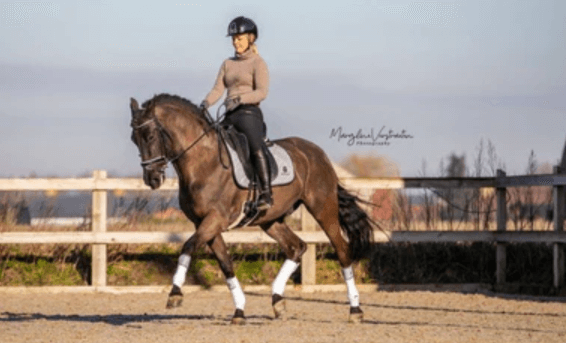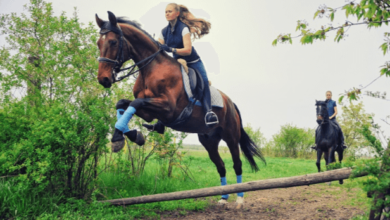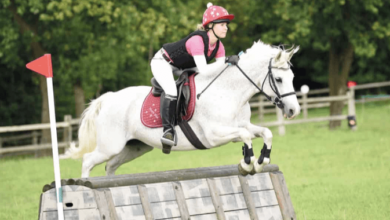What are the rules of team penning?

Team penning is a fast-paced equestrian sport that tests the coordination, speed, and strategy of both horse and rider. It originated from the practical skills used by ranchers to sort cattle, evolving into a competitive sport with clear rules and regulations. The objective is for a team of three riders to separate specific cattle from a larger herd and corral them into a pen within a specified time. While the concept may seem simple, the sport’s complexity arises from the various rules governing the identification, separation, and penning of cattle.
This article delves into the specific rules that define team penning and how they create a fair and competitive environment for participants.
Objective of Team Penning
The primary goal of team penning is for a team of three riders to separate three specific cattle from a herd of thirty and drive them into a small pen within a designated time, usually 60 to 90 seconds. Each cow is marked with a number or colored collar, and only cattle bearing the same number or color as called by the judge can be penned. Teams must work together to identify the correct cattle, separate them from the herd, and guide them into the pen while maintaining control of the entire situation.
The Herd and Identification
One of the central challenges in team penning is accurately identifying the designated cattle within a mixed herd. Here’s how the process works:
- Herd Size: Typically, the herd consists of 30 cattle, each wearing a numbered or colored collar. Numbers are usually assigned in groups of three, so there would be ten groups of three with identical numbers or colors.
- Judge’s Role: At the start of the round, the judge will randomly select and announce a number or color. The riders are then responsible for locating and isolating the three cows that match this identification within the herd.
- Mistakes in Identification: If a team pens cows that do not belong to the designated group, they are disqualified or penalized, depending on the specific competition rules.
The ability to quickly recognize and respond to the judge’s announcement is a critical aspect of the sport, making sharp eyes and teamwork essential.
Separation and Control
The process of separating the cattle from the herd is where the sport’s excitement and difficulty arise. Riders must be skilled in both horsemanship and cattle-handling techniques to ensure a successful separation without scattering the herd or causing unnecessary chaos.
- Strategy: Riders often employ a strategic approach to isolate the target cattle. One common tactic is for one rider to engage the herd while the other two move in to cut out the correct cattle.
- Avoiding Disruptions: Disrupting the entire herd or causing excessive movement among non-target cows can result in penalties. Teams must aim to separate the correct cattle as cleanly and quietly as possible.
- Controlling the Cattle: Once the three designated cows are separated, the team must control their movements, driving them toward the pen. Riders must prevent any non-designated cattle from following, as this can lead to disqualification or a time penalty.
Effective communication between team members is crucial during this phase, as one misstep can result in the wrong cows being driven into the pen, potentially losing valuable time.
Time Limits
Like many competitive sports, time is a critical factor in team penning. Each team typically has between 60 to 90 seconds to complete the task, though specific times may vary depending on the event or organization.
- Countdown Start: The clock starts the moment the judge announces the designated number or color, and it does not stop until the cattle are penned, or the time expires.
- Time Management: Teams must balance speed with precision. Rushing too quickly can lead to mistakes, while taking too much time may result in a failure to pen the cattle before the clock runs out.
- Penalties for Time: If the team fails to pen any of the designated cattle within the time limit, they receive no score for the round. Additionally, partial penalties may be given if only some of the designated cattle are penned.
The challenge lies in maintaining a swift yet controlled pace, ensuring that both time constraints and accuracy are managed effectively.
The Pen and Penning Process
The actual penning process is the final and arguably most challenging part of the event. After separating the cattle from the herd and driving them toward the pen, the team must corral them into a small enclosure, typically located at one end of the arena.
- Pen Size and Location: The pen is usually a small enclosure at the opposite end of the arena from where the herd is initially released. It has a narrow opening, requiring precise control of the cattle to guide them inside.
- Teamwork in Penning: This stage requires seamless cooperation between riders. One rider may block the entrance to the pen to prevent the cattle from escaping, while the others drive the cattle forward.
- No Help from Non-Target Cows: If a non-designated cow enters the pen or helps in any way to corral the designated cattle, the team may be disqualified. Riders must ensure that only the correct cows are penned.
Penning requires a careful balance between aggression and control. Riders must ensure they push the cattle hard enough to move them into the pen but not so hard that they cause confusion or lose control.
Fouls and Disqualifications
While team penning is designed to be fast and fun, there are several rules governing fouls and disqualifications to maintain the sport’s integrity and fairness.
- Bringing in Wrong Cattle: One of the most common fouls is driving non-designated cattle into the pen. Even if only one cow from a different group enters the pen, the entire effort can be disqualified.
- Rough Handling of Cattle: Excessive roughness or poor handling of the cattle can also result in penalties or disqualification. The welfare of the cattle is paramount, and any team that causes undue stress or harm to the animals will face consequences.
- Crossing the Pen Line: Once the team has driven the correct cattle into the pen, they must not cross the designated line into the pen area themselves. Doing so can result in a disqualification.
- Late Penning: If the team does not pen the cattle within the allotted time, they will not receive a score for that round.
Fouls and penalties serve as a reminder that the sport is not just about speed but also about skill, control, and respect for the animals involved.
Scoring System
In team penning, scoring is based on a combination of factors, including the number of cattle penned, the time taken, and any penalties incurred. Here’s how the scoring works:
- Number of Cattle Penned: Teams earn points based on how many of the designated cows they successfully pen. A perfect score is awarded when all three cows are penned.
- Time Factor: Time plays a crucial role in scoring. Teams that pen the correct cattle the fastest earn higher scores. In the event of a tie in the number of cattle penned, the team with the fastest time wins.
- Penalty Deductions: Any fouls or penalties, such as rough handling or penning incorrect cattle, can lead to deductions from the final score.
The scoring system rewards both efficiency and accuracy, encouraging teams to work quickly without sacrificing precision.
Team Communication and Strategy
Effective communication between team members is one of the keys to success in team penning. Since the sport requires multiple riders working in unison, clear communication ensures that all riders are on the same page, whether they are identifying cattle, cutting them from the herd, or driving them to the pen.
- Roles within the Team: Often, teams assign specific roles to each rider. For example, one rider may be responsible for controlling the herd, while the other two focus on isolating and driving the target cattle.
- Communication Cues: Teams develop their own signals and communication methods to ensure smooth execution. These can include verbal cues, hand signals, or even pre-arranged strategies based on the cattle’s behavior.
- Adjusting Strategy on the Fly: Flexibility is key in team penning. Since cattle can behave unpredictably, teams must be able to adjust their strategy quickly if their initial approach isn’t working.
A successful team penning effort depends on the ability to combine individual horsemanship skills with cohesive team strategies.
Equipment and Tack Rules
Team penning, like other equestrian sports, has specific regulations regarding the type of equipment and tack that riders can use. These rules ensure fairness and safety for both the riders and the horses.
- Saddles and Bridles: Riders must use appropriate saddles and bridles suited to the sport, typically Western-style tack. The use of certain types of bits or spurs may be restricted to prevent undue harm to the horse.
- Protective Gear: Riders are encouraged, and in some competitions required, to wear helmets for safety. While traditionally Western riding does not mandate helmets, modern competitions are increasingly prioritizing rider safety.
- Horse Welfare: The welfare of the horse is paramount. Riders must ensure that their tack is comfortable and properly fitted to avoid causing injury or distress to their horse.
These equipment regulations help maintain a level playing field and promote responsible horsemanship.
Conclusion
Team penning is a thrilling and dynamic sport that demands teamwork, skill, and strategy. The combination of identifying the correct cattle, separating them from the herd, and successfully penning them within a short time frame makes for a challenging and exciting event. By adhering to the rules of cattle identification, separation, timing, and scoring, competitors ensure a fair and competitive environment that showcases the best of equestrian skills.
Whether you’re a seasoned rider or a spectator, team penning offers a unique blend of speed, precision, and horsemanship, providing entertainment and a display of exceptional teamwork.




